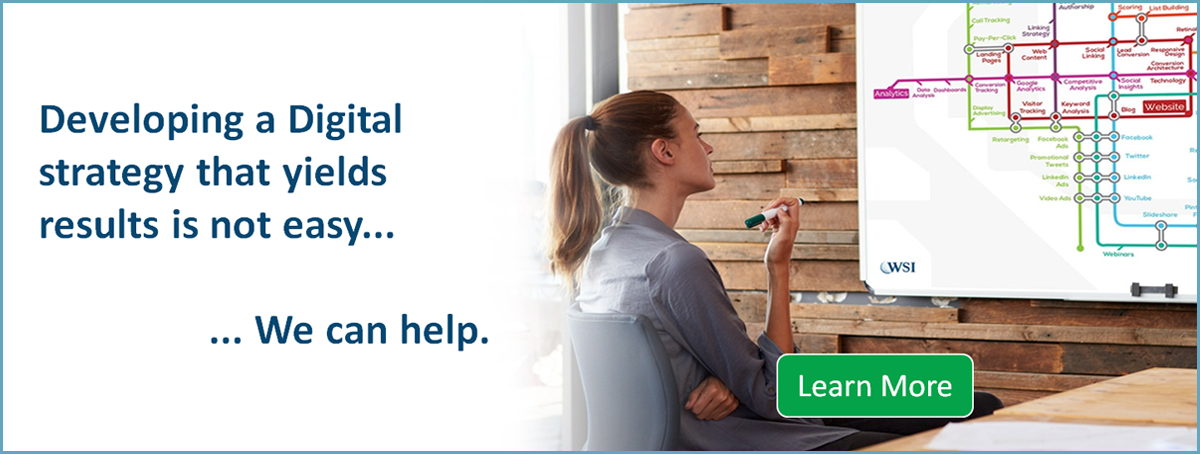Getting people to visit your website through demand generation and inbound marketing is only half the battle.
There are so many “shiny new objects” in today’s digital landscape the important role that your website plays in the lead generation process is often overlooked.
“Never let your ads write checks that your website can’t cash.” – Avinash Kaushik
You need to ensure your website is up to scratch so these visitors convert to leads. Getting millions of visitors isn’t going to help you sell your product or service if those visitors aren’t leaving without taking any actions that can help you eventually convert them into a sale.
Your website has a job to do.
It’s your hardest working salesperson and is there at weekends 24/7 to answer any questions that potential prospects may have.
While having a visually attractive website that showcases your brand is important, for many business executives, that’s where their interest in the website ends.
However, it needs to do much more than that and you will be rewarded for providing your visitor with a great user experience allowing them to find the information they are looking for with clear calls-to-action on how to move to the next step in the process.
What is a Conversion
We can define a conversion as a desired action that you would like your website visitor to take.
Let’s say you are a software company.
When considering desired actions, the holy grail might be an enquiry from the website requesting a consultation with one of your sales people. We would define this as a hard conversion.
However there are several “softer” conversions that your website can help with to support your Lead Generation goals. For example – Downloading a white paper, watching a video or requesting a demo.
The conversion rate is the percentage of visitors coming to your website that take one of your desired actions.
A conversion action should really have an economic value. Evaluating the performance of your website ultimately boils down to a mathematical calculation.
Let’s take a simple example…
Scenario 1:
Advertising Budget = €1,000
Cost Per Click = €1.25
No of Visitors on website = 800 (€1,000 / €1.25)
No of Enquiries = 32 => Conversion rate = 32/800 = 0.04 (4%)
Now let’s assume that the company closes a quarter (25%) of these enquiries into sales and the average sale value is €150
No of Enquiries = 32
Close rate = 25%
No of Sales = 8
Total Revenue = €1200
Profit = €200 (Revenue – cost (ad budget))
Now let’s see what happens if we increase the conversion rate by just one percentage point.
Scenario 2:
Advertising Budget = €1,000
Cost Per Click = €1.25
No of Visitors on website = 800 (€1,000 / €1.25)
Conversion Rate = 5%
No of Enquiries = (800 x 5%) = 40
Close rate = 25%
No of Sales = 10
Total Revenue = €1500
Profit = €500 (Revenue – cost (ad budget))
Even though this is a pretty simplistic example we can see that a one percent increase in conversion rate created a 150% increase in Profit.
If we told you that a 1% improvement in your website’s conversion performance would more than double your profits, would you focus more of your marketing attention here?
Assuming the answer is a resounding YES, what can you do make these improvements?
-Lead Generation Blogs-
Understand what your customers want
Before starting to build a website – or optimising your existing one – you need to understand what your customers want. When we ask the question “Who should design your site we usually get responses like “your digital agency”, “your marketing team” or even your “Boss”!
The correct answer is…
Your Customer.
Your website should only be focused only on visitor needs. There is a temptation to talk a lot about your company and all the wonderful things you do BUT the key focus should be on helping to solve the issue that your web visitor is looking for help with.
As outlined in our Digital BluePrint, the starting point is to develop a persona for each fictional customer type so that you really understand how your customer ticks, what’s important to them, what’s not important to them and what keeps them awake at night.
Once you have completed this Persona exercise you have a much better handle on what your customers need help with and this will not only help you plan out a killer content marketing plan but also help you develop a website that is specifically tailored to cater for the needs, wants & goals of these personas.
Conversion Architecture
At WSI we use a methodology called conversion architecture™ to build websites that achieve high conversion goals for our clients.
We already mentioned that the key consideration when building a website with a strong Conversion Architecture is to think about your customers. We like to define conversion architecture as the intersection between user intent, website experience and company goals.
Generally a good design principal for websites is to reduce cognitive friction – It is our experience (and back up by data) that if you make people think too much they will leave.
Your potential customer will ask 3 things when they land on your site:
- Am I in the right place
- How do I feel about this website
- What am I supposed to do next
Is your website answering these questions for YOUR customers?
Focus on the technical side
When you understand who you are building your website for, you need to make sure it works exactly as it should do, and is as error- and bug-free as possible. This may sound obvious, but many companies still focus on the design of the site and then view the technical performance as secondary.
Google penalises sites that are slow to load or have too many error messages and problems, which will make it harder for your customers to find you. If you haven’t done so already, it’s a good idea to carry out an SEO audit so you can find any areas for improvement.
Make it as easy as possible for customers to understand where they need to go to get information or take actions and remove any kind of friction that may prevent this from happening.
As part of our Digital BluePrint workshop we undertake a detailed review of your website. It includes a Technical analysis, a Gaze plot report that analyses site behaviour, messaging critique of your content, an SEO audit and general observations and recommendations on how you can improve the conversion performance of your website.
The value of split testing
Split testing, also known as A/B testing or multivariate testing is a method of conducting controlled, randomized experiments with the goal of improving a website’s conversion metrics.
There is a control page that doesn’t change (Page A) and a test page (Page B) that is testing a specific change. It could simply be a different colour on a call to action button or a different image on the page. The key to success is adding a new variant for each change – Otherwise its not possible to determine what worked and what didn’t.
Incoming traffic to the website is distributed evenly between the original (control) and the different variations without any of the visitors knowing that they are part of an experiment.
The experiment runs for an agreed period and then the results from each test variant is compared to determine which version showed the greatest improvement.
At WSI we are firm believers that you can’t fix what you don’t measure so we use this marketing methodology to test changes to signup forms, registration pages, calls to action, or any other parts of a website where a measurable goal can be improved. So many times we have been in meetings where stakeholders put forward subjective ideas around web design. With split design these ideas can be made objective. We simply test them and if they yield higher conversion rates, great we apply them to the site, if they don’t then they get dropped.
Shocking Statistic: Over 67 percent of all companies NEVER perform A/B or multivariate testing on their website.
Most companies spend a fortune on advertising yet they never test and optimise their website for conversion performance. This is usually the quickest way to turn failing campaigns into profitable investments.
Build landing pages to improve user experience
When we talk about Conversion, we are usually referring to your website. However in some cases, particularly if you have a very specific action that you would like a visitor to take, a better strategy is to take the visitor to a page that has been designed for that purpose.
We refer to this as a landing page.
“A landing page is a page, independent of your website, that’s created specifically to receive the traffic from a campaign (like advertising, email, and social). The best landing pages have a clear call to action and no (or very few) distracting links to other pages”. – Oli Gardner, Unbounce
Make sure you A/B test all of your landing pages in addition to the permanent pages of your website to ensure they are performing at an optimal level.
Your business needs a website that makes the most of your products and services. At WSI Digital, we offer a range of website solutions that can help you provide the best user experience, both in terms of design and performance to boost your conversion rates.






Stay Connected